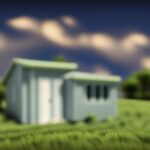Beginners Guides
What Are These Tiny Little Flying Bugs In My House

Have you ever entered your home only to find yourself welcomed by a bunch of small, airborne insects? It feels as though they emerge from thin air, hovering around your head and settling on all available surfaces. It’s both annoying and somewhat disconcerting to deal with these irritating intruders in your living space.
But fear not, for I am here to shed some light on the mystery of these tiny little flying bugs.
In this article, we will explore the common types of flying insects that may be infiltrating your house. We will delve into the reasons behind their presence and provide you with preventive measures to keep them out. Additionally, we will discuss natural remedies and chemical solutions for getting rid of these pests, as well as the potential risks and dangers they may pose.
By maintaining a clean and hygienic home environment, you can greatly reduce the likelihood of future infestations. So, if you’re ready to take back control of your house and bid farewell to these tiny flying bugs, read on. It’s time to arm yourself with knowledge and take action against these unwelcome guests.
Key Takeaways
- Different types of flying insects can be found in houses, including fruit flies, gnats, mosquitoes, and drain flies.
- These flying insects are attracted to specific environments and food sources, such as overripe fruits, moist areas, stagnant water, and damp environments.
- Various home remedies can be used to trap or repel these flying pests, such as using apple cider vinegar and dish soap traps, removing standing water, using sticky traps, and cleaning drains.
- Preventive measures, such as cleaning and decluttering, sealing cracks and openings, and removing standing water, are essential in reducing the presence of flying insects in the house.
Identify the Common Types of Flying Insects in Your House
Do you know what those tiny little flying bugs in your house are? If you’ve noticed these pests buzzing around, it’s important to identify them correctly so you can effectively deal with the infestation.
There are several common types of flying insects that can invade your home, including fruit flies, gnats, mosquitoes, and drain flies. Fruit flies are attracted to overripe fruits and vegetables, while gnats are drawn to moist areas and decaying organic matter. Mosquitoes breed in stagnant water and can carry diseases, while drain flies thrive in damp environments like drains and pipes. Understanding the reasons for their presence is crucial in eliminating them from your home.
To tackle these flying pests, there are effective home remedies you can try. For fruit flies, create a trap using apple cider vinegar and dish soap. Gnats can be controlled by removing standing water and using sticky traps. Mosquitoes can be deterred by keeping doors and windows screened and using mosquito repellents. Finally, drain flies can be eliminated by cleaning and disinfecting your drains.
By identifying the common types of flying insects in your house and utilizing effective home remedies, you can successfully combat their presence. Now, let’s delve deeper into understanding the reasons for their infestation.
Understand the Reasons for Their Presence
You may be wondering why these pesky critters have invaded your humble abode, but fear not, for there’s often a rhyme and reason to their presence.
To understand the life cycle, behavior, and habits of flying insects, it’s important to recognize that they are attracted to specific conditions and resources. Identifying these potential attractants and breeding grounds can help you address the issue at hand.
Flying insects are typically drawn to areas with moisture, food sources, and shelter. The kitchen and bathroom are prime locations due to the availability of water and organic matter. Crumbs, spills, and garbage provide ample food sources, while damp areas like sinks and drains offer ideal breeding grounds. Additionally, decaying wood, potted plants, and outdoor vegetation near windows can attract flying insects indoors.
To prevent further infestations, it is crucial to eliminate these attractants. Regularly clean and sanitize your living spaces, paying close attention to areas prone to moisture and food debris. Repair any leaks or water sources that may be drawing insects in. Seal cracks and crevices around windows and doors to prevent their entry.
By taking these preventive measures, you can keep these tiny bugs out of your house and enjoy a pest-free environment.
Take Preventive Measures to Keep Them Out
To prevent the presence of tiny flying bugs in my house, I need to take three key preventive measures. Firstly, I should clean and declutter my home regularly to eliminate potential breeding grounds for these pests.
Secondly, it’s important to seal any cracks and openings in doors, windows, and walls to prevent their entry.
Lastly, I need to remove any standing water from my property as it serves as a prime breeding site for these bugs.
By implementing these preventive measures, I can effectively keep these annoying pests out of my house.
Clean and Declutter Your Home
Start by tidying up your home and getting rid of any clutter to eliminate these tiny little flying bugs. Cleaning and organizing strategies can make a significant difference in keeping these pests at bay.
Here are a few cleaning tips to help you get started:
-
Vacuum regularly: Use a vacuum cleaner with a HEPA filter to remove any dust, debris, or food particles that may attract the bugs.
-
Wipe down surfaces: Clean countertops, tables, and other surfaces with a mixture of water and vinegar to deter bugs from landing and breeding.
-
Empty trash regularly: Dispose of garbage promptly to prevent odors and food sources from attracting the bugs.
By implementing these cleaning tips and organizing strategies, you can create an environment that’s less appealing to these tiny flying bugs.
Once your home’s clean and clutter-free, you can move on to the next step of sealing cracks and openings to further prevent their entry.
Seal Cracks and Openings
Once your home is clean and clutter-free, it’s time to tackle the next step: sealing cracks and openings to keep those pesky pests out. Properly sealing any openings in your house is an essential part of insect control. By doing so, you can prevent tiny flying bugs from entering your home and causing annoyance. To help you understand the importance of sealing openings, take a look at the table below:
| Types of Openings | Common Locations |
|---|---|
| Cracks | Walls, floors, and ceilings |
| Gaps | Windows and doors |
| Vents | Attics and crawl spaces |
By sealing these areas, you create a barrier that effectively blocks the entry points for bugs. Once you have successfully sealed the cracks and openings, the next step is to remove standing water. This will further eliminate potential breeding grounds for insects.
Remove Standing Water
Eliminating standing water is crucial for preventing pests from breeding in your home. Mosquitoes, in particular, are attracted to stagnant water as it provides the perfect environment for them to lay their eggs.
To prevent mosquito breeding, it’s important to regularly inspect your property for any areas where water may accumulate. Fix leaky faucets and pipes promptly, as even a small drip can create a breeding ground for these annoying insects.
Additionally, ensure that your gutters are clean and free of debris, as clogged gutters can hold water and attract mosquitoes.
By taking these preventative measures, you can significantly reduce the likelihood of mosquito infestations in your home.
Now, let’s explore natural remedies to get rid of these pesky bugs without the use of chemicals.
Use Natural Remedies to Get Rid of Them
To effectively tackle those pesky little flying bugs in your house, try using natural remedies that’ll transport you to a bug-free haven. Natural remedies offer a safe and eco-friendly way to eliminate these bothersome insects without the use of harmful chemicals. DIY solutions using readily available ingredients aren’t just effective but also cost-effective.
One natural remedy to consider is apple cider vinegar. Simply mix equal parts of apple cider vinegar and water in a spray bottle and use it to target areas where the bugs are most prevalent. The strong odor of the vinegar will repel the insects, making them less likely to return.
Another effective natural remedy is essential oils. Certain oils, such as peppermint, lavender, and eucalyptus, are known for their insect-repelling properties. Dilute a few drops of your chosen oil in water and use it to wipe down surfaces or create a spray.
Additionally, maintaining a clean and clutter-free environment is crucial in preventing the bugs from returning. Regularly vacuuming, sweeping, and emptying trash cans will help eliminate potential breeding grounds.
Consider chemical solutions for persistent infestations, as natural remedies may not always completely eradicate the problem. However, starting with natural remedies is a great first step in achieving a bug-free home.
Consider Chemical Solutions for Persistent Infestations
If the natural remedies don’t do the trick, it might be time to consider chemical solutions for those persistent bug infestations. While natural remedies are often preferred due to their environmental friendliness and non-toxicity, sometimes they are simply not enough to eliminate the problem. Chemical solutions can provide a more aggressive approach, targeting and eradicating the tiny flying bugs in your house. However, it is important to consider the potential long-term effects of using chemical solutions.
To better understand the differences between chemical and natural remedies, let’s compare them in a table:
| Chemical Solutions | Natural Remedies |
|---|---|
| More aggressive | Less aggressive |
| May have toxic effects | Non-toxic |
| Effective against persistent infestations | May require multiple applications |
While chemical solutions can be effective in eliminating persistent bug infestations, it is important to weigh the potential long-term effects. Some chemicals may have toxic effects on humans, pets, and the environment. It is crucial to follow the instructions on the product label and take necessary precautions to minimize exposure. Additionally, chemical solutions may require multiple applications to completely eradicate the infestation.
If natural remedies prove ineffective, considering chemical solutions can be a viable option. However, it is important to be mindful of the potential long-term effects and use them responsibly. Seek professional help if necessary to ensure the safety and effectiveness of the treatment.
Seek Professional Help if Necessary
When seeking professional help, you can count on their expertise to effectively tackle persistent bug infestations. Here are four reasons why seeking professional advice is the best course of action:
-
Specialized Knowledge: Pest control professionals have extensive training and experience in dealing with various types of infestations. They can accurately identify the insects in your house and determine the most effective treatment methods.
-
Targeted Approach: Professionals will assess the extent of the infestation and develop a customized plan to eliminate the bugs. They will consider factors such as the type of insects, the size of the area affected, and the level of infestation to determine the best course of action.
-
Safe and Effective Solutions: DIY methods may provide temporary relief, but they often fail to address the root cause of the infestation. Professionals use safe and approved chemicals and techniques to eliminate the insects without posing a risk to your health or the environment.
-
Long-term Prevention: Pest control experts not only eliminate the current infestation but also provide recommendations to prevent future ones. They can identify potential entry points and advise on measures to make your home less attractive to bugs.
By seeking professional help, you can ensure a thorough and effective treatment of your bug infestation. However, it’s also essential to learn about the potential risks and dangers associated with chemical solutions.
Learn about the Potential Risks and Dangers
When it comes to these tiny little flying bugs in my house, it’s important to understand the potential risks and dangers they pose.
Firstly, they can trigger allergies and aggravate asthma symptoms, making it difficult to breathe.
Secondly, some of these bugs are known to transmit diseases, posing a threat to our health.
Lastly, these pests can also cause property damage by chewing through wood, fabric, and other materials, leading to expensive repairs.
Allergies and Asthma
Tiny flying bugs in your house can aggravate allergies and asthma. These pests can act as triggers for allergic reactions, causing symptoms such as sneezing, itchy eyes, and a runny nose. For individuals with asthma, these bugs can worsen respiratory health and lead to increased coughing, wheezing, and difficulty breathing. The presence of these bugs can also contribute to the overall indoor air pollution, which can further exacerbate allergies and asthma.
It’s important to identify and eliminate the source of these bugs to minimize their impact on your respiratory health.
In the next section, we’ll explore how these tiny bugs can also pose a risk in terms of disease transmission.
Disease Transmission
You may be surprised to learn that these pesky critters can actually transmit various diseases, posing a potential health risk to you and your loved ones. Tiny flying bugs in your house can carry and spread diseases such as West Nile virus, dengue fever, malaria, and Zika virus.
These insects, such as mosquitoes and flies, can pick up disease-causing pathogens from infected individuals or animals and then transmit them to humans through their bites. To prevent insect-borne illnesses, you should take measures to reduce their population and protect yourself from bites. This includes using insect repellents, wearing long sleeves and pants, and ensuring your home is properly sealed to prevent their entry.
By understanding the risks and implementing effective disease prevention strategies, you can safeguard your health and that of your family.
Now let’s explore how these tiny bugs can also cause property damage.
Property Damage
Not only can these pesky critters transmit diseases, but they can also cause damage to your property. When these tiny flying bugs infest your house, they can wreak havoc on your belongings.
They have a tendency to chew through various materials such as wood, fabrics, and paper, leaving behind unsightly holes and damage. This can be particularly problematic if you have valuable furniture, clothing, or important documents that are susceptible to their destructive tendencies.
In some cases, the damage caused by these bugs may not be covered by property insurance, leaving you with the responsibility of repairing or replacing the affected items. To prevent such damage, it’s crucial to promptly address any infestations by seeking professional pest control services.
By doing so, you can ensure the protection of your property and minimize the risk of costly repairs. Maintaining a clean and hygienic home environment is essential for preventing these pests from causing further damage.
Maintain a Clean and Hygienic Home Environment
To truly experience the bliss of a pristine and germ-free home, it’s vital to maintain a clean and hygienic environment. One of the key aspects of achieving this is through proper food storage. Ensuring that all food items are securely sealed and stored in airtight containers prevents the attraction of tiny flying bugs and other pests.
These insects are often drawn to food sources, so by keeping them properly stored, we can minimize the risk of infestations. Regular vacuuming also plays a crucial role in maintaining a clean home environment. Tiny flying bugs can easily hide in carpets, upholstery, and corners of our living spaces. By vacuuming regularly, we can remove any potential hiding spots and eliminate these pests before they become a problem.
It’s important to pay special attention to areas where crumbs or food particles may accumulate, as these can be a major attractant for bugs. By prioritizing proper food storage and regular vacuuming, we can create a clean and hygienic home environment that is less susceptible to infestations.
Taking these preventive measures will significantly reduce the presence of tiny flying bugs and ensure a healthier living space for ourselves and our families. Let’s now explore how we can prevent future infestations without compromising our comfort and convenience.
Prevent Future Infestations
Regular maintenance of our living spaces is essential in preventing future infestations, as it helps to identify and address any potential entry points or breeding grounds for pests.
To reduce moisture and minimize the risk of attracting tiny flying bugs, it’s important to fix any leaks or plumbing issues promptly. Moisture attracts pests, so keeping areas dry and well-ventilated is crucial.
Additionally, using insect repellents can help deter these bugs from entering your home. Apply repellents around windows, doors, and other entry points to create a barrier that keeps them out.
Regularly clean and vacuum your house to eliminate any potential food sources or hiding places for these pests. Pay special attention to areas like kitchen counters, garbage cans, and pet food dishes.
Lastly, seal any cracks or gaps in windows, doors, or walls to prevent bugs from finding their way inside.
By following these practices, you can significantly reduce the chances of future infestations.
Moving forward, it’s important to stay informed and educated about common pests and their habits to effectively prevent and address any potential issues.
Stay Informed and Educated
Stay informed and educated about pests and their habits so you can effectively prevent any future infestations in your home. It’s crucial to stay updated and knowledgeable about the tiny flying bugs in your house, as this will help you in identifying and addressing any potential issues.
These bugs can be a nuisance, but with the right information, you can take proactive measures to keep them at bay. To stay updated, regularly research and read about common pests and their characteristics. Understanding their behavior, breeding patterns, and preferred habitats will give you valuable insights into how to prevent infestations.
Keep an eye out for any new information or developments in pest control techniques, as methods and solutions are constantly evolving. Additionally, staying knowledgeable about the signs of an infestation is essential. Learn to recognize the specific characteristics of the tiny flying bugs in your house, such as their appearance, size, and flying patterns.
This knowledge will enable you to take immediate action when necessary and prevent the problem from escalating. By staying informed and educated, you can stay one step ahead of these pests. Remember, prevention is key, and your efforts will go a long way in maintaining a pest-free home.
Frequently Asked Questions
How do I identify the common types of flying insects in my house?
To identify common types of flying insects in your house, carefully observe their physical characteristics such as size, shape, color, and wings. Use a magnifying glass or a smartphone camera to capture clear images for further research or professional identification.
What are the potential risks and dangers associated with these tiny little flying bugs?
Potential risks and health hazards associated with these tiny little flying bugs include allergic reactions, spread of diseases, and damage to property. Effective methods of extermination include insecticides, traps, and keeping a clean and well-maintained environment.
How can I prevent future infestations of these flying insects?
To prevent future infestations of flying insects, I recommend using effective bug repellents. These repellents can help keep these tiny pests away from your house and minimize the chances of an infestation occurring again.
What are some natural remedies I can use to get rid of these tiny little flying bugs?
To naturally eliminate tiny flying bugs, try these remedies: 1) Use essential oils like peppermint or lavender as repellents. 2) Create vinegar traps to catch and kill them. To prevent infestations, keep your house clean, remove standing water, and seal any entry points.
When should I seek professional help for a persistent infestation of these flying bugs?
If a persistent infestation of flying bugs persists despite natural remedies, seeking professional help is recommended. Pest control experts can accurately identify the species and implement effective treatments to eradicate the infestation.
Conclusion
To conclude, it’s essential to identify and understand the common types of flying insects in your house. This will help you effectively deal with them. Taking preventive measures, such as sealing cracks and keeping food properly stored, can help keep them out.
Natural remedies, like using essential oils or vinegar, can be used to get rid of these bugs. In persistent infestations, chemical solutions may be necessary.
Maintaining a clean and hygienic home environment is crucial in preventing future infestations. Did you know that a study found that flies can carry over 200 different types of harmful bacteria? This statistic highlights the importance of taking action to eliminate these tiny bugs from your house.
Stay informed and educated to keep your home bug-free.
Hi, I’m Emma. I’m the Editor in Chief of Tiny House 43, a blog all about tiny houses. While tree houses are often associated with childhood, they can be the perfect adult retreat. They offer a cozy space to relax and unwind, surrounded by nature. And since they’re typically built on stilts or raised platforms, they offer stunning views that traditional homes simply can’t match. If you’re looking for a unique and romantic getaway, a tree house tiny house might just be the perfect option.
Beginners Guides
How To Frame A Tiny House

Are you prepared to start your minimalist living adventure? Imagine a tranquil retreat surrounded by nature, where every bit of space is optimized for convenience and coziness. Welcome to the realm of tiny houses.
But, before you can start enjoying the benefits of tiny living, you need to know how to frame your very own tiny house. In this article, I will guide you through the process step by step, ensuring that you have all the knowledge and tools necessary to bring your tiny house dreams to life. From determining the size and layout to finishing those exterior touches, we will cover it all.
So, grab your hammer and let’s get started on the exciting journey of framing a tiny house!
Key Takeaways
- Framing a tiny house is crucial for achieving functionality and comfort in a limited space.
- Careful consideration of the size and layout is necessary to meet individual lifestyle and needs.
- Sketching out different floor plans helps in finding the perfect arrangement before starting the framing process.
- Safety precautions, permits, and compliance with building codes are essential during the framing process.
Determine the Size and Layout of Your Tiny House
So, you’re ready to start building your dream tiny house, but first, let’s figure out just how big and how it’s going to be laid out!
Determining the size and layout of your tiny house is crucial for maximizing space and incorporating multi-functional furniture. Begin by considering your lifestyle and needs. Think about how many rooms you’ll require and how you want them arranged.
Take into account the dimensions of your furniture and appliances to ensure they fit comfortably. Sketch out different floor plans, experimenting with various layouts until you find the perfect arrangement.
Once you have a clear vision, gather the necessary tools and materials to bring your dream tiny house to life. Transitioning into the next section, having the right tools will enable you to tackle the framing process with ease.
Gather the Necessary Tools and Materials
First, you’ll need to gather all the essential tools and materials, because let’s face it, building a mini abode without them would be like trying to catch a fish with a toothpick – completely pointless.
When it comes to framing a tiny house, choosing the right framing techniques is crucial. You’ll need a reliable circular saw to make precise cuts on the lumber, a framing square to ensure accurate angles, and a level to keep everything plumb and square. Additionally, a nail gun with appropriate nails will save you time and effort when securing the framing members together.
Safety precautions are of utmost importance during the framing process. Always wear protective eyewear, gloves, and a hard hat. Use sturdy ladders and scaffolding, and secure them properly.
Finally, remember to gather all necessary permits and consult local building codes before proceeding with the framing.
Now that you have all the tools and materials, let’s move on to preparing the foundation for framing.
Prepare the Foundation for Framing
To adequately prepare the foundation for framing, you must ensure that all necessary permits are obtained and local building codes are consulted.
Before starting the construction process, it’s crucial to prepare the ground by removing any vegetation, rocks, or debris that may interfere with the foundation.
Next, you need to level the foundation area using a laser level or a string level to ensure a flat and even surface. This step is vital as it’ll determine the stability and durability of your tiny house.
Once the ground is prepared, you can proceed to frame the walls and install window and door openings.
By following these steps, you’ll create a solid foundation that’ll provide a sturdy base for the rest of your tiny house construction.
Frame the Walls and Install Window and Door Openings
Once you’ve prepared the foundation, it’s time to roll up your sleeves and start building those walls. Add in the windows and door openings for a touch of character and functionality. Begin by framing the walls using 2×4 lumber, ensuring they’re plumb and square.
Install the window openings by measuring and cutting out the appropriate size in each wall, leaving room for headers and sills. Secure the windows in place using screws or nails, making sure they’re level and properly sealed to prevent any drafts or water leaks.
Next, frame the door openings, accounting for the door size and necessary clearance. Install the door frames, ensuring they’re level and securely attached to the surrounding wall framing.
Finally, transition into the subsequent section about framing the roof and installing roof trusses by ensuring the walls are sturdy and ready to support the next phase of construction.
Frame the Roof and Install Roof Trusses
Now that you’ve built the sturdy walls and installed the windows and door openings, it’s time to take your construction to new heights by framing the roof and installing the roof trusses.
Roof truss installation techniques are crucial to ensure the stability and durability of your tiny house. When choosing the right roofing materials, consider factors such as weight, weather resistance, and aesthetic appeal. Common options include asphalt shingles, metal roofing, and cedar shakes. Additionally, make sure to select a roofing material that complements the overall design of your tiny house.
Once you have the materials ready, begin by attaching the roof trusses to the top plates of the walls. Ensure proper alignment and secure them using nails or screws. This step is essential as it forms the foundation for installing insulation and vapor barrier, which will be covered in the next section about installing insulation and vapor barrier.
Install Insulation and Vapor Barrier
As you work on creating a cozy and well-insulated sanctuary, imagine wrapping your tiny haven in a protective cocoon with insulation and vapor barrier materials.
Proper insulation is crucial to maintaining a comfortable temperature inside your tiny house and preventing energy loss. Start by choosing insulation materials that are suitable for your climate and provide maximum thermal resistance. Common options include fiberglass, spray foam, and rigid foam boards.
Install the insulation between the wall studs, roof trusses, and floor joists, ensuring a tight fit to minimize air leakage.
Next, add a vapor barrier to prevent moisture buildup. This can be a plastic sheet or a special vapor barrier paint. Secure the barrier to the interior side of the insulation, ensuring a continuous seal.
By following these insulation tips and moisture prevention techniques, you can create a well-insulated and protected tiny house.
Moving on to the next step of the process, let’s now discuss how to install electrical and plumbing systems.
Install Electrical and Plumbing Systems
To create a fully functional and comfortable living space, you’ll need to install electrical and plumbing systems, ensuring that your tiny sanctuary is equipped with essential amenities.
When it comes to electrical wiring, it’s crucial to plan the layout carefully and adhere to local building codes. Begin by installing the electrical service panel and running the main power supply. From there, you can route the wiring to outlets, switches, and light fixtures throughout the tiny house. Make sure to follow proper safety precautions, such as grounding and using GFCI outlets in wet areas.
In addition to electrical wiring, plumbing installation is another vital aspect. Start by connecting the main water supply line and installing a water heater if desired. Proceed to install the plumbing for sinks, showers, toilets, and any other necessary fixtures. Use PEX or PVC pipes, ensuring proper ventilation and drainage. Don’t forget to insulate any exposed pipes to prevent freezing during colder months.
By completing the installation of electrical and plumbing systems, you’ll be one step closer to enjoying a fully functional tiny house. Next, we’ll delve into how to finish the interior walls and ceiling seamlessly.
Finish the Interior Walls and Ceiling
Once the electrical and plumbing systems are in place, it’s time to tackle the interior walls and ceiling. This involves finishing the interior walls and ceiling to create a cozy and inviting space. Did you know that the average homeowner spends about 20% of their renovation budget on this step?
When it comes to choosing the right paint color, it’s important to consider the overall aesthetic you want to achieve. Lighter colors can make a small space feel larger and more open, while darker colors can add depth and warmth.
Additionally, selecting the best lighting fixtures is crucial for both functionality and style. You should consider the type of lighting you need in each area of the tiny house and choose fixtures that complement the overall design.
Next, we will delve into the next step of the process, which involves installing the flooring and cabinets to complete the interior transformation.
Install Flooring and Cabinets
After completing the interior walls and ceiling, it’s time to focus on installing the flooring and cabinets to truly bring the space to life. When it comes to flooring, there are various options to consider for a tiny house. You can choose from hardwood, laminate, vinyl, or tile, depending on your personal preference and budget. It’s important to ensure that the flooring is durable and easy to clean, as space is limited.
In terms of cabinets, selecting the right ones can make a huge difference in maximizing storage and functionality. Consider choosing cabinets that are compact and space-saving, with built-in organizers for better organization. Additionally, installing countertops is an essential step in completing the kitchen area. Choose a countertop material that is both aesthetically pleasing and durable, such as quartz or granite.
Once the flooring and cabinets are installed, it’s time to move on to the next phase of the project: the complete exterior finishing touches.
Complete Exterior Finishing Touches
Don’t forget the final touches on the exterior – the details that’ll truly make your tiny house shine! When it comes to exterior finishing touches, there are a few key elements to consider.
Here are some ideas to enhance the overall look and feel of your tiny house:
-
Exterior paint options: Choose a color scheme that complements the surroundings and reflects your personal style. Consider using durable, weather-resistant paints that’ll protect your tiny house from the elements.
-
Landscaping ideas: Enhance the curb appeal by incorporating landscaping elements such as flower beds, shrubs, or even a small garden. Select low-maintenance plants that can thrive in the local climate and require minimal watering and upkeep.
-
Lighting fixtures: Install outdoor lighting fixtures strategically to illuminate pathways, highlight architectural features, and create a warm ambiance. Opt for energy-efficient LED lights to minimize electricity consumption.
By paying attention to these exterior finishing touches, you can transform your tiny house into a visually appealing and inviting space.
Frequently Asked Questions
How much does it cost to frame a tiny house?
The cost breakdown for framing a tiny house can vary depending on several factors. On average, it can cost between $5,000 and $15,000 to frame a tiny house. However, there are cost-saving options available.
Utilizing salvaged or recycled materials can significantly reduce costs. Additionally, opting for a simple design with fewer corners and angles can minimize the amount of framing required. It’s important to consider these factors when budgeting for framing a tiny house.
Can I use recycled materials for framing my tiny house?
Yes, I can use recycled materials for framing my tiny house. This offers several benefits. By using recycled materials, I can reduce the environmental impact and save costs. Alternatives to traditional framing methods include reclaimed lumber, salvaged steel, and repurposed shipping containers. These materials are sturdy, durable, and readily available. Incorporating recycled materials in the framing process not only supports sustainability but also adds character and uniqueness to the overall design of the tiny house.
What are the common mistakes to avoid when framing a tiny house?
Common framing mistakes to avoid when constructing a tiny house include improper measuring and cutting of materials, inadequate bracing and support, and neglecting to properly secure the frame to the trailer or foundation.
To ensure efficient framing, it’s important to plan and layout the frame accurately, use quality materials, and follow building codes and regulations.
Additionally, using appropriate tools, techniques, and fasteners will help create a sturdy and durable structure for your tiny house.
How long does it typically take to frame a tiny house?
To speed up the framing process of a tiny house, there are a few tips for efficient construction.
Firstly, organizing and labeling all materials beforehand will save time and reduce confusion.
Secondly, using prefabricated wall panels can significantly reduce framing time.
Additionally, employing a team of experienced framers can expedite the process.
Lastly, having a well-designed and detailed framing plan will ensure smooth execution.
By implementing these strategies, the average time to frame a tiny house can be significantly reduced.
Are there any specific building codes or regulations I need to be aware of when framing a tiny house?
When it comes to framing a tiny house, there are specific building codes and regulations that need to be followed. These codes ensure the structural integrity and safety of the house. Building codes for tiny house framing outline requirements for materials, dimensions, and construction techniques.
Regulations for framing a tiny house may include guidelines for wall framing, roof framing, and floor framing.
It is important to research and comply with these codes and regulations to ensure a well-built and legally compliant tiny house.
Conclusion
In conclusion, framing a tiny house requires careful planning, precise measurements, and a variety of tools and materials. By following the steps outlined in this article, you can successfully construct the frame of your tiny house and create a sturdy and functional living space.
For example, Sarah, a DIY enthusiast, used this framing technique to build her own tiny house on wheels. With determination and attention to detail, she was able to create a cozy and customized home that perfectly suited her needs.
So, whether you’re looking to downsize, live off-grid, or have a portable vacation home, framing a tiny house is a rewarding and fulfilling project that can turn your dreams into reality.
Hi, I’m Emma. I’m the Editor in Chief of Tiny House 43, a blog all about tiny houses. While tree houses are often associated with childhood, they can be the perfect adult retreat. They offer a cozy space to relax and unwind, surrounded by nature. And since they’re typically built on stilts or raised platforms, they offer stunning views that traditional homes simply can’t match. If you’re looking for a unique and romantic getaway, a tree house tiny house might just be the perfect option.
Beginners Guides
Chip And Dale Episode Where They Live In A Tiny House

Were you aware that the average size of a new single-family home in the United States has grown by nearly 1,000 square feet over the last 50 years? It appears that we have an unquenchable thirst for additional space, belongings, and mess.
But what if I told you that there’s a charming Chip and Dale episode where they embrace a completely different lifestyle and live in a tiny house? In this episode, our beloved chipmunks show us the joys and challenges of downsizing and embracing minimalism. They navigate cramped spaces with creativity and find innovative storage solutions that will leave you in awe.
Join Chip and Dale as they embark on their tiny house adventure, maximizing functionality in a small home, and inspiring viewers to think outside the box with their living arrangements. Get ready for a delightful and inspiring journey into the world of Chip and Dale’s tiny house living!
Key Takeaways
- Chip and Dale showcase the joys and challenges of living in a tiny house, inspiring viewers to think outside the box with their living arrangements.
- Creative storage solutions, such as utilizing vertical space and multi-functional furniture, are essential in maximizing functionality in a small home.
- Maximizing natural light and incorporating small space gardening are important aspects of tiny house design.
- Chip and Dale demonstrate that with clever design choices and efficient use of space, every corner of a tiny house can be transformed into a multi-purpose area.
Downsizing and Embracing Minimalism
Get ready to join Chip and Dale as they embark on an exciting adventure of downsizing their lives and fully embracing the joy of minimalism in their adorable tiny house! Living a minimalist lifestyle has numerous benefits, including reduced stress, increased freedom, and a greater focus on what truly matters.
By downsizing their possessions, Chip and Dale are able to simplify their lives and create more space for experiences and meaningful connections. They no longer feel overwhelmed by the burden of excess stuff and instead find joy in the simplicity of their tiny house.
But downsizing is just the beginning. In the next section, we’ll explore how Chip and Dale creatively maximize storage in their tiny house, proving that even in a small space, there’s always room for clever solutions.
Creative Storage Solutions in a Tiny House
Find clever ways to store your belongings in a cramped space. In a tiny house, innovative organization and space-saving furniture are key to maximizing every inch of available space. Here are some creative storage solutions to inspire you:
-
Utilize vertical space: Install shelves or hanging organizers on walls to keep items off the floor and create more storage space.
-
Multi-functional furniture: Choose furniture pieces that serve dual purposes, such as a sofa with built-in storage or a bed with drawers underneath.
-
Magnetic walls: Use magnetic panels or paint a wall with magnetic paint to hang small metal objects like knives or keys.
-
Foldable furniture: Opt for collapsible tables or chairs that can be easily stored away when not in use.
With these clever storage ideas, you can make the most of your tiny house and keep it clutter-free. Now, let’s explore how Chip and Dale navigate cramped spaces in their tiny house without missing a beat.
Navigating Cramped Spaces with Chip and Dale
Squeezing through tight nooks and crannies, it’s as if Chip and Dale effortlessly pirouette through their miniature maze of a home. With their resourceful mindset, they’ve mastered the art of maximizing space and organizing their belongings in their tiny house.
Every inch is utilized to its fullest potential, from clever built-in storage compartments to multifunctional furniture. The walls are adorned with shelves and hooks, creating vertical storage solutions that keep their belongings within reach. Tiny drawers and cabinets neatly house their essentials, while collapsible furniture allows for flexible use of space.
Despite the challenges of cramped quarters, Chip and Dale have found joy in their tiny house living. They’ve learned to appreciate simplicity and the freedom that comes with owning less.
In the next section, we’ll explore the challenges and joys of their unique lifestyle.
The Challenges and Joys of Tiny House Living
Living in a tiny house presents both challenges and joys, as individuals navigate the complexities of maximizing space and finding contentment in simplicity.
-
Limited storage: With limited square footage, finding creative storage solutions is crucial. Utilizing vertical space, such as installing shelves or hanging baskets, can help maximize storage options.
-
Multifunctional furniture: Investing in furniture that serves multiple purposes, like a coffee table that doubles as a storage unit or a sofa that can be converted into a bed, can help optimize space and functionality.
-
Downsizing possessions: Living in a tiny house requires decluttering and minimizing belongings. Embracing a minimalist lifestyle can bring a sense of freedom and reduce the need for excess storage.
-
Outdoor living: Having a small home encourages spending more time outdoors. Creating an inviting outdoor space with seating, plants, and decor can expand the living area and provide a refreshing escape.
Transitioning into the next section, maximizing functionality in a small home involves clever design choices and efficient use of space.
Maximizing Functionality in a Small Home
You’ll be amazed at how you can transform every nook and cranny of your small home into a functional and efficient space. In a tiny house, it’s important to make the most of every square inch and find creative ways to maximize functionality. One way to do this is through small space gardening, which allows you to grow your own herbs and vegetables even in limited space. Another important aspect is maximizing natural light. Clever placement of mirrors and light-colored furnishings can help to create the illusion of a larger space and make it feel brighter and more open. To help you visualize these ideas, here’s a table showcasing some tips for maximizing functionality in a small home:
| Tip | Description |
|---|---|
| Small Space Gardening | Utilize vertical gardening techniques to grow plants in tight spaces |
| Maximizing Natural Light | Position mirrors strategically to reflect and amplify natural light |
| Multi-purpose Furniture | Opt for furniture that can serve multiple functions, such as a sofa bed or a coffee table with storage |
| Wall-mounted Storage | Install shelves and hooks on walls to maximize storage space |
| Organizational Systems | Utilize bins, baskets, and dividers to keep things tidy and organized |
In the next section, we’ll explore design tips for a cozy and stylish tiny house, seamlessly transitioning from maximizing functionality to creating a comfortable living space.
Design Tips for a Cozy and Stylish Tiny House
To create a cozy and stylish atmosphere in a small home, it’s essential to incorporate design elements that add warmth and personality. One way to achieve this is through cozy lighting. Soft, warm lighting can instantly create a welcoming and intimate ambiance. Consider installing dimmer switches or using floor lamps with warm-toned bulbs to create a cozy glow.
Another key aspect is space-saving furniture. In a small home, every inch counts, so opt for furniture that serves multiple purposes. Look for sofas or beds with built-in storage compartments, or consider using a convertible dining table that can be easily transformed into a desk or an extra seating area.
By incorporating these design elements, you can create a cozy and stylish tiny house that maximizes functionality and reflects your personal style.
Transitioning into the next section, let’s explore how to create multi-purpose areas in a tiny house.
Creating Multi-Purpose Areas in a Tiny House
When it comes to transforming your tiny space, think of it as a blank canvas ready to be painted with versatile furniture and clever layouts, turning each corner into a world of possibilities. One of the key strategies for maximizing space in a tiny house is by creating multi-purpose areas. By incorporating multi-functional furniture and space-saving design, you can make the most out of every square inch. For example, a dining table with built-in storage can serve as both a place to eat and a space to store books or other items. A sofa that can be converted into a bed allows you to have a living room during the day and a bedroom at night. By thinking creatively and utilizing these innovative solutions, you can create a cozy and efficient living space. In the next section, we will explore Chip and Dale’s DIY projects for their tiny home, showcasing their ingenuity and resourcefulness.
Chip and Dale’s DIY Projects for Their Tiny Home
After successfully creating multi-purpose areas in their tiny house, Chip and Dale are now ready to tackle some DIY projects to further enhance their living space.
Chip and Dale’s DIY renovation skills come to the forefront as they embark on transforming their tiny home into a stylish and functional oasis. Utilizing their creativity and resourcefulness, they explore various tiny house interior design ideas that maximize space and add personality to their humble abode.
-
Custom Furniture: Chip and Dale showcase their woodworking skills by creating custom furniture pieces that are tailored to fit the dimensions of their tiny house.
-
Clever Storage Solutions: They ingeniously design and build hidden storage compartments and shelves, utilizing every nook and cranny to keep their belongings organized.
-
Space-Saving Hacks: From foldable tables to wall-mounted accessories, Chip and Dale discover innovative ways to save space and make their tiny home feel more spacious.
With their DIY projects complete, Chip and Dale inspire viewers to think outside the box with their living arrangements, proving that even in a tiny house, the possibilities are endless.
Inspiring Viewers to Think Outside the Box with Their Living Arrangements
By pushing the boundaries of conventional living arrangements, viewers are encouraged to unleash their creativity and reimagine the possibilities of their own homes. Chip and Dale’s tiny house journey showcases unique designs that inspire viewers to think outside the box when it comes to their living arrangements.
The duo’s DIY projects for their tiny home demonstrate the benefits of living in a small space. With limited square footage, they’ve optimized every nook and cranny to create a functional and stylish living environment. From innovative storage solutions to multi-purpose furniture, Chip and Dale prove that living small doesn’t mean sacrificing comfort or style.
Their tiny house encourages viewers to reconsider their own living situations and explore the potential of downsizing. Whether it’s to save money, reduce environmental impact, or simply embrace a minimalist lifestyle, Chip and Dale’s tiny house serves as a source of inspiration for those seeking a more unconventional and sustainable way of living.
Frequently Asked Questions
How long have Chip and Dale been living in their tiny house?
Living in their tiny house has taught Chip and Dale valuable lessons about long term sustainability. How long they have been living there is unknown, but their experience has surely been filled with growth and adaptation.
What inspired Chip and Dale to downsize and embrace minimalism?
The inspiration to downsize and embrace minimalism can be attributed to the benefits of minimalism and the origins of the tiny house movement. It offers a simplified lifestyle, financial freedom, and reduced environmental impact.
How did Chip and Dale come up with their creative storage solutions in their tiny house?
I came up with creative storage solutions and organization techniques in my tiny house by thinking outside the box and utilizing every available space. It was a fun challenge that allowed me to maximize storage while still maintaining a clutter-free environment.
Can Chip and Dale offer any tips for navigating cramped spaces in a tiny house?
To maximize storage in a tiny house, try these tips: utilize vertical space with shelves and hooks, use furniture with hidden storage compartments, and get creative with multi-functional pieces. Create a multi-functional living space by incorporating convertible furniture and modular storage solutions.
What are some of the challenges and joys that Chip and Dale have experienced while living in their tiny house?
Living in a tiny house comes with challenges like limited storage and privacy, but it also brings joys like simplicity and coziness. Here are some tips for navigating cramped spaces and making the most of a small home.
Conclusion
In conclusion, Chip and Dale’s journey in their tiny house has shown us the beauty and possibilities of living small. They have proven that size doesn’t matter when it comes to creating a cozy and stylish home through their creative storage solutions and clever design choices. Their DIY projects and multi-purpose areas have inspired viewers to think outside the box with their own living arrangements.
Just like Chip and Dale, we can all embrace minimalism and maximize functionality in our homes. By doing so, we can create a space that is both practical and delightful to live in. So, let’s take a leaf out of their book and start thinking big in our tiny houses!
Hi, I’m Emma. I’m the Editor in Chief of Tiny House 43, a blog all about tiny houses. While tree houses are often associated with childhood, they can be the perfect adult retreat. They offer a cozy space to relax and unwind, surrounded by nature. And since they’re typically built on stilts or raised platforms, they offer stunning views that traditional homes simply can’t match. If you’re looking for a unique and romantic getaway, a tree house tiny house might just be the perfect option.
Beginners Guides
Cheap Land For Low Income For Person Who Want To Build Tiny House

Picture yourself in a charming home tucked away in the midst of nature, enveloped by trees and clear skies. A sanctuary that belongs solely to you, offering a cost-effective and comfortable living space. While it may seem like a far-off fantasy, with the correct tools and perseverance, it can transform into a tangible reality.
In this article, I will guide you through the process of finding cheap land for low income individuals who want to build their own tiny house.
Finding affordable land can be a challenging task, but there are various avenues to explore. From government programs and grants to affordable housing organizations and nonprofits, there are resources available to assist you in your search. Additionally, land auctions, foreclosure sales, and rural areas may offer more affordable options.
To navigate the complex world of real estate, it’s essential to connect with local experts such as real estate agents and landowners who can provide valuable insights. Furthermore, joining tiny house communities and forums can offer tips and advice from experienced individuals.
Don’t be afraid to think outside the box and explore unconventional land opportunities. Lease or rent-to-own options and partnering with others interested in tiny house living are also worth considering.
By following these steps and utilizing the available resources, you can find the perfect plot of land for your tiny house, making your dreams of affordable homeownership a reality.
Key Takeaways
- Explore government programs and grants for financial assistance
- Consider lease or rent-to-own options
- Connect with local real estate agents and landowners for insights
- Utilize online land listing platforms for convenient search
Research Available Government Programs and Grants
You’ll find a variety of government programs and grants available to research and potentially access for obtaining cheap land for your low-income tiny house project. These government grants can provide financial assistance and resources to help you secure affordable land for your tiny house.
Start by researching programs like the USDA Rural Development’s Single Family Housing Direct Home Loans, which offers low-income individuals the opportunity to purchase land with low-interest loans.
Additionally, the U.S. Department of Housing and Urban Development (HUD) offers various grants and programs aimed at promoting affordable housing. These grants can provide funding for land acquisition and development for low-income housing projects.
To further explore your options, consider reaching out to affordable housing organizations and nonprofits in your area. These organizations often have valuable resources and information about available grants and programs that can help you in your quest for cheap land.
Explore Affordable Housing Organizations and Nonprofits
If you’re interested in finding a bargain, there are several affordable housing organizations and nonprofits that can help you make the most of your limited resources. These organizations specialize in providing affordable housing options for low-income individuals, including those who want to build a tiny house. They can offer valuable resources and guidance on accessing affordable housing grants and programs that can help offset the costs of land acquisition and construction. Additionally, they may be connected to community land trusts, which are nonprofit organizations that acquire and hold land for the benefit of the community. These land trusts often have affordable housing initiatives and can provide opportunities for low-income individuals to purchase or lease land at reduced prices. By exploring these affordable housing organizations and nonprofits, you can find the support and resources needed to make your dream of building a tiny house a reality. In the next section, we will discuss how to look for land auctions and foreclosure sales to find affordable land options.
Look for Land Auctions and Foreclosure Sales
Take advantage of exciting opportunities to discover hidden gems and secure your own slice of paradise by exploring land auctions and foreclosure sales.
Land auctions and foreclosure sales can be a great way to find affordable land for your tiny house project. Many government programs, grants, affordable housing organizations, and nonprofits offer information and resources to help low-income individuals access these unconventional land opportunities. Real estate agents and landowners may also be able to provide leads on upcoming auctions and sales.
Additionally, online land listing platforms, tiny house communities, and forums can be valuable resources for finding out about available properties. Consider lease options, rent to own options, or partnering with others to make land ownership more feasible.
By exploring land auctions and foreclosure sales, you can find affordable land for your tiny house project and take a step towards realizing your dream of homeownership in rural areas.
Consider Purchasing Land in Rural Areas
Venturing into the countryside, you’ll unearth the perfect plot for your dream retreat, where nature’s symphony will serenade your soul. Buying land in remote areas can be an affordable option for those seeking cheap land for their tiny house. Not only are prices typically lower in rural areas, but you’ll also have more space to create the ideal tiny home oasis.
When considering alternative financing options, there are a few strategies to explore. First, look into owner financing, where the seller acts as the lender and allows you to make monthly payments directly to them. This can be a great way to bypass traditional bank loans and negotiate more flexible terms.
Another option is to explore grants or subsidies designed to assist low-income individuals in purchasing land for housing purposes.
In addition, connecting with local real estate agents and landowners can provide valuable insights and opportunities. They may have knowledge of upcoming land listings or be aware of properties that are not publicly advertised. By building relationships with these individuals, you can gain access to a wider range of options and increase your chances of finding the perfect affordable land for your tiny house.
Transitioning into the next section about connecting with local real estate agents and landowners, these professionals can offer guidance and expertise in navigating the buying process.
Connect with Local Real Estate Agents and Landowners
Immerse yourself in the local community and uncover hidden gems by connecting with real estate agents and landowners who hold the key to your dream retreat. By reaching out to these individuals, you can gain valuable insights into the local real estate market and find affordable land options that suit your needs. One way to connect with local landowners is to attend community events and network with people who have knowledge of available properties. Additionally, real estate agents can provide you with information on rent-to-own options, which can be a great solution for low-income individuals looking to build a tiny house. By establishing these connections and exploring the opportunities they present, you can find the perfect plot of land for your tiny home project. Next, let’s discuss how to utilize online land listing platforms to further expand your search.
Utilize Online Land Listing Platforms
One interesting statistic to evoke emotion in the audience is that online land listing platforms have helped thousands of people find their dream property for their tiny home projects. These platforms provide a convenient and accessible way to search for cheap land options that are suitable for low-income individuals who want to build their own tiny house.
Here are a few reasons why utilizing online land listing platforms can be beneficial:
-
Alternative financing: Many landowners on these platforms offer flexible financing options, making it easier for low-income individuals to purchase land for their tiny house projects.
-
Creative zoning: Online land listing platforms often have a wide range of properties available, including those in areas with more lenient zoning regulations. This allows individuals to find land where they can legally build and live in their tiny homes.
-
Expanded search options: These platforms allow users to filter their search based on specific criteria, such as price range, location, and land size. This makes it easier to find affordable land options that meet individual needs.
-
Increased visibility: By utilizing online land listing platforms, individuals can access a larger pool of potential properties. This increases the chances of finding a suitable and affordable piece of land for their tiny home project.
By utilizing online land listing platforms, individuals can take advantage of alternative financing options, creative zoning regulations, expanded search options, and increased visibility to find the perfect piece of land for their tiny home project. This is just one step towards achieving the goal of building an affordable and sustainable tiny home.
Join Tiny House Communities and Forums for Tips and Advice
Joining tiny house communities and forums is a great way to connect with like-minded individuals and gain valuable tips and advice for your own tiny home project. These communities and forums are filled with people who have already gone through the process of finding cheap land for their tiny homes and can provide guidance on finding land sharing opportunities. They can also offer insights into exploring tiny house financing options, such as grants, loans, or crowdfunding platforms specifically designed for tiny house projects.
By joining these communities and forums, you can tap into a wealth of knowledge and resources that can help you navigate the challenges of building a tiny home on a limited budget.
Transitioning into the next section, you can also investigate lease or rent-to-own options to further explore affordable housing solutions.
Investigate Lease or Rent-to-Own Options
After exploring tiny house communities and forums, I discovered another option for obtaining cheap land for low-income individuals like myself: lease or rent-to-own options. These alternatives provide an opportunity to secure land without a large upfront payment.
Leasing offers the advantage of lower monthly payments, allowing me to allocate more funds towards building my tiny house. Additionally, leasing provides flexibility, as I can choose to renew the lease or find a different location if needed. On the other hand, a rent-to-own agreement provides the potential to eventually own the land I’m leasing, giving me long-term stability.
To ensure a successful rent-to-own agreement, I’ll take a few important steps. Firstly, I’ll carefully review the terms and conditions of the agreement, including the purchase price and duration of the rental period. Secondly, I’ll save money for a down payment, as this’ll reduce the overall cost in the long run. Finally, I’ll consult with a real estate attorney to ensure the agreement is fair and protects my interests.
Transitioning into the next section, by partnering with others interested in tiny house living, we can explore more affordable options and share resources to make our dreams a reality.
Partner with Others Interested in Tiny House Living
By teaming up with like-minded individuals passionate about the minimalist lifestyle, we can discover more cost-effective alternatives and pool our resources for a shared journey towards realizing our tiny house dreams.
Partnering with others interested in tiny house living not only helps to reduce costs but also provides an opportunity for collaboration and support.
There are various partnering opportunities available that can help us secure cheap land for our tiny house projects. For example, we can form a cooperative where multiple individuals contribute funds towards purchasing a larger piece of land that can be subdivided into smaller plots for each tiny house.
Additionally, creative financing options such as crowdfunding or finding investors interested in supporting the tiny house movement can help us secure the necessary funds. By exploring these partnering opportunities and creative financing methods, we can significantly reduce the financial burden of acquiring land for our tiny homes.
Now, let’s think outside the box and explore unconventional land opportunities.
Think Outside the Box: Explore Unconventional Land Opportunities
Let’s get creative and uncover unique opportunities to find the perfect location for our dream tiny home! When it comes to alternative housing solutions, thinking outside the box is key. Here are three unconventional land opportunities to consider:
-
Community Land Trusts: These non-profit organizations purchase land and lease it to low-income individuals at affordable rates. By partnering with a community land trust, you can secure a long-term lease for your tiny home, ensuring stability and affordability.
-
Unused Urban Spaces: Look for vacant lots or underutilized spaces in urban areas. Many cities are open to leasing these spaces for tiny homes, providing an opportunity to live closer to amenities and job opportunities.
-
Creative Financing Options: Explore financing options that cater to low-income individuals. Programs like low-interest loans, grants, or crowdfunding campaigns can help make your dream of owning a tiny home a reality.
By exploring these alternative land opportunities and creative financing options, you can find affordable land for your tiny home and make your housing dreams come true.
Frequently Asked Questions
Are there any special grants or programs available specifically for low-income individuals looking to build a tiny house on cheap land?
Special grants and government programs, like those offered by affordable housing organizations, can assist low-income individuals in building their tiny homes on cheap land. Connecting with real estate agents and exploring land auctions and foreclosure sales are also viable options.
How can I find affordable housing organizations and nonprofits that can assist me in my search for cheap land for a tiny house?
I can find affordable housing resources and nonprofit assistance to help me in my search for a tiny house. These organizations provide valuable support and guidance to individuals looking for affordable housing options.
What should I know about land auctions and foreclosure sales in order to find the best deals on cheap land?
Land auction strategies and foreclosure sale tips can help me find the best deals on cheap land. I’ll research auction procedures, set a budget, and attend auctions prepared. I’ll also explore foreclosure listings and consider working with a real estate agent for expert guidance.
Are there any specific considerations I should keep in mind when purchasing land in rural areas for a tiny house?
When purchasing land in rural areas for a tiny house, there are important considerations to keep in mind. One key factor is zoning restrictions, which determine where and how you can build your tiny home.
How can I effectively connect with local real estate agents and landowners who may have cheap land available for sale?
To effectively connect with local real estate agents and find landowners with cheap land for sale, I suggest attending local real estate events, joining online forums and groups, networking with locals, and utilizing social media platforms to reach out and inquire about available properties.
Conclusion
After hours of diligent research and exploration, I’ve discovered a plethora of options for securing cheap land to build my dream tiny house.
From government programs and grants to affordable housing organizations, the possibilities are endless.
By connecting with local real estate agents and joining tiny house communities, I’ve gained invaluable tips and advice.
Additionally, considering unconventional land opportunities has opened up new doors.
With determination and resourcefulness, I’m confident that I’ll find the perfect plot of land to call my own and embark on my journey towards a simpler, more fulfilling life.
Hi, I’m Emma. I’m the Editor in Chief of Tiny House 43, a blog all about tiny houses. While tree houses are often associated with childhood, they can be the perfect adult retreat. They offer a cozy space to relax and unwind, surrounded by nature. And since they’re typically built on stilts or raised platforms, they offer stunning views that traditional homes simply can’t match. If you’re looking for a unique and romantic getaway, a tree house tiny house might just be the perfect option.
-

 Beginners Guides1 week ago
Beginners Guides1 week agoHow To Buy A Tesla Tiny House
-
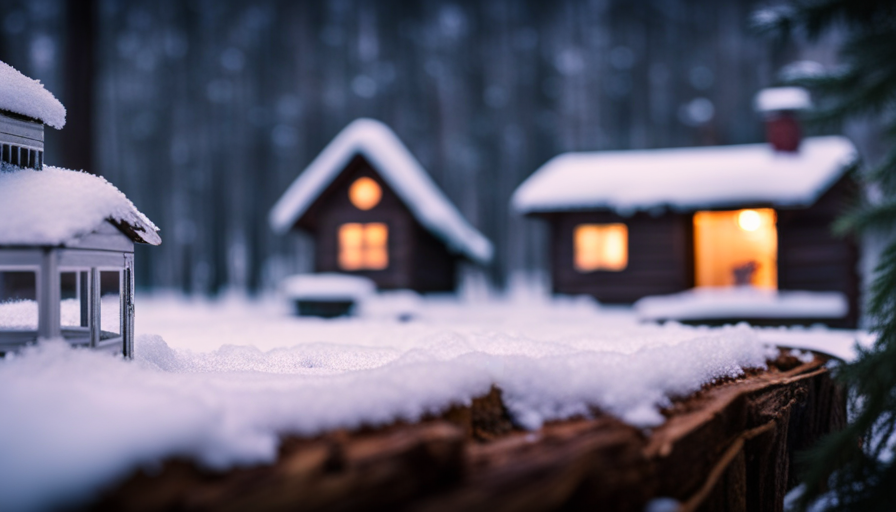
 Energy Efficiency1 month ago
Energy Efficiency1 month agoBest Tiny Homes For Cold Climates
-
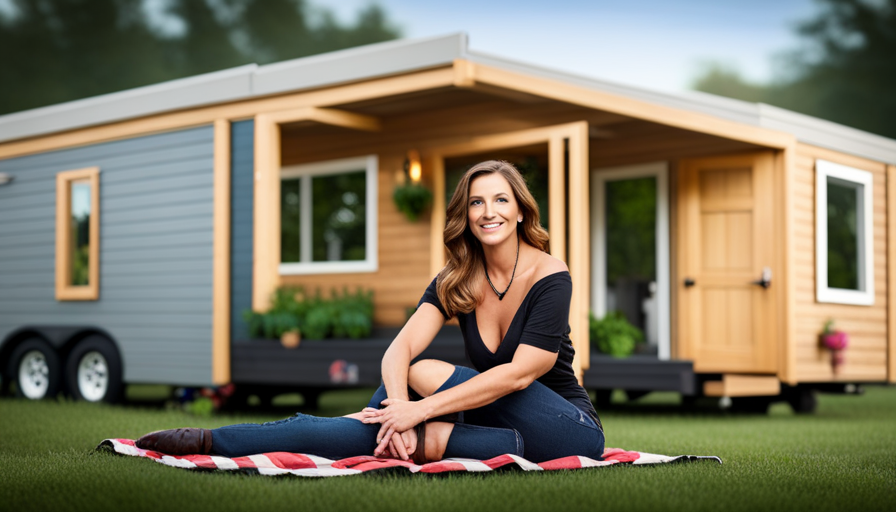
 Beginners Guides4 days ago
Beginners Guides4 days agoTiny House Nation Where Are They Now Stephanie
-

 Tiny House Resources (e.g., legalities, cost, insurance, FAQs)2 months ago
Tiny House Resources (e.g., legalities, cost, insurance, FAQs)2 months agoDo Tiny Homes Need Planning Permission?
-
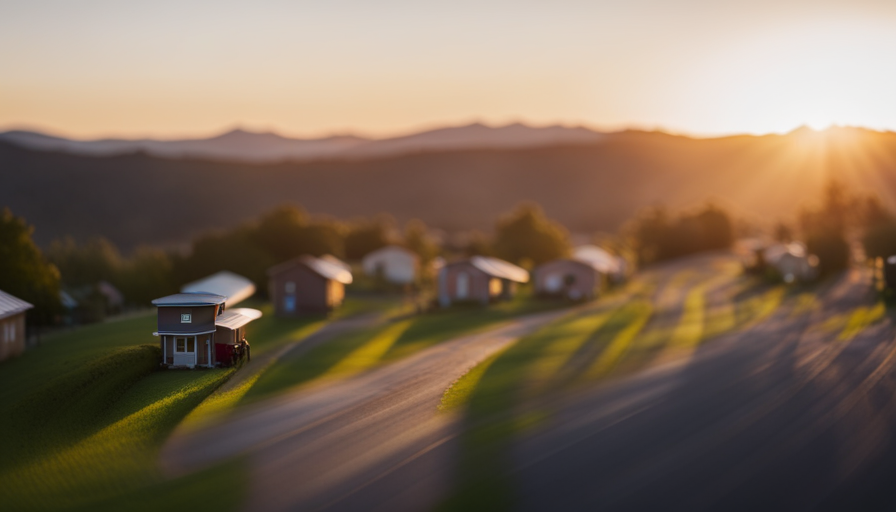
 Beginners Guides2 weeks ago
Beginners Guides2 weeks agoFrom The Show Tiny House Nation How Many Keep Their Tiny House?
-

 Beginners Guides2 months ago
Beginners Guides2 months agoUsing a Climbing Net For Treehouse Construction
-
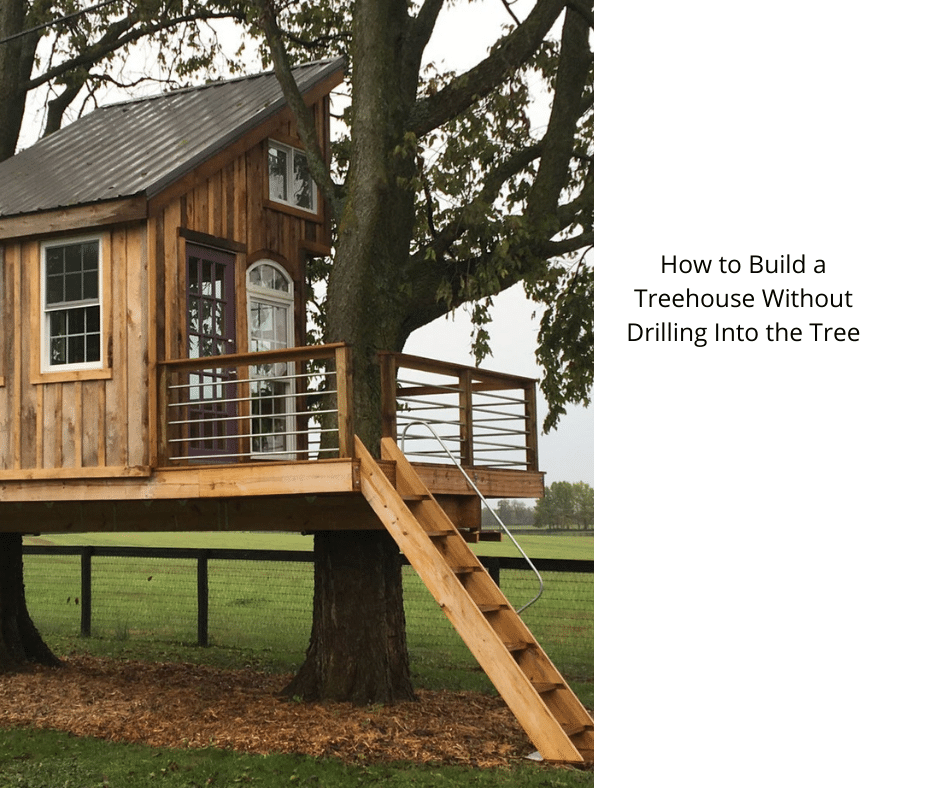
 Beginners Guides2 months ago
Beginners Guides2 months agoHow to Build a Treehouse Without Drilling Into the Tree
-

 Beginners Guides2 weeks ago
Beginners Guides2 weeks agoTiny House Nation Who Pays For The Houses




